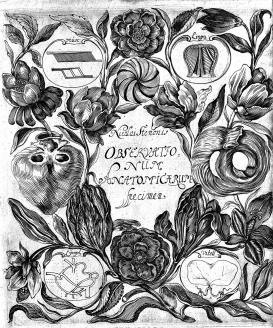Nicolaus Steno (1638–1686) became famous for scientific discoveries such as naming the so-called female testicles as ovaries, describing the heart as a muscle, and finding the principles of superposition of the Earth’s strata. My project argues, however, that one of Steno’s most innovative contributions was his use of mathematics in anatomy: an effort to mathematize the body that responded directly to the seventeenth century’s “crisis of certainty.” This crisis reflected the intellectual anxiety of not knowing whether it was possible to understand the true causes of natural phenomena—a pressing question in face of the apparent failure of the scientific paradigms of antiquity. Steno was attracted to mathematics because it allowed him to make anatomical claims with axiomatic certainty and in a quantifiable manner.
As he crossed northern and southern Europe, Steno wrote letters that brought together many founding members of scientific academies throughout Europe, who also influenced his approach to anatomy. But in his travels, he had to face yet another intellectual dilemma, that of not knowing which Christian denomination was true—another pressing problem after the Thirty Years’ War had emphasized Europe’s religious divide. In my project, I explore how Steno found solace not just in mathematics, but also in his religious conversion. Steno’s later personal life decisions to become a priest and to write more on theology suggest that his search for certainty in science resonated with important religious currents of the early modern period.

